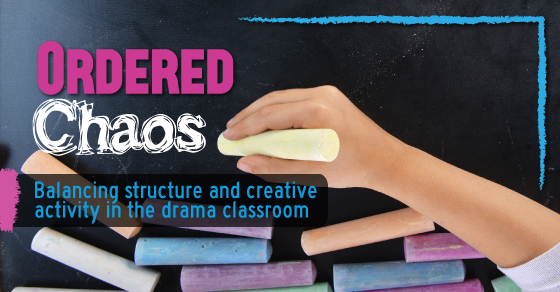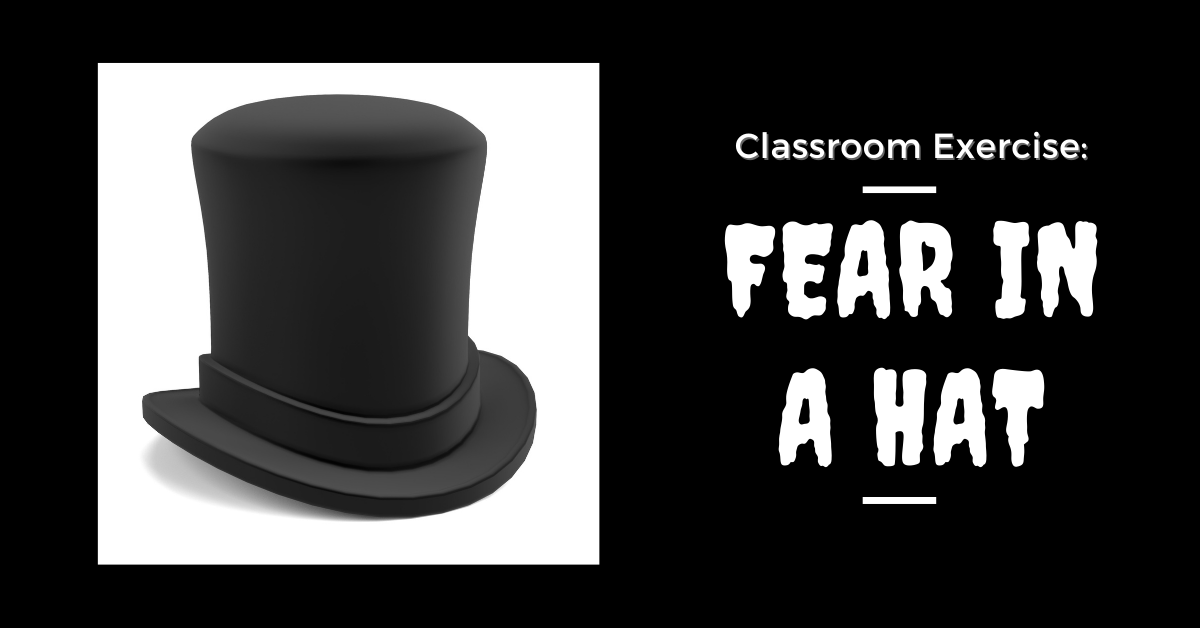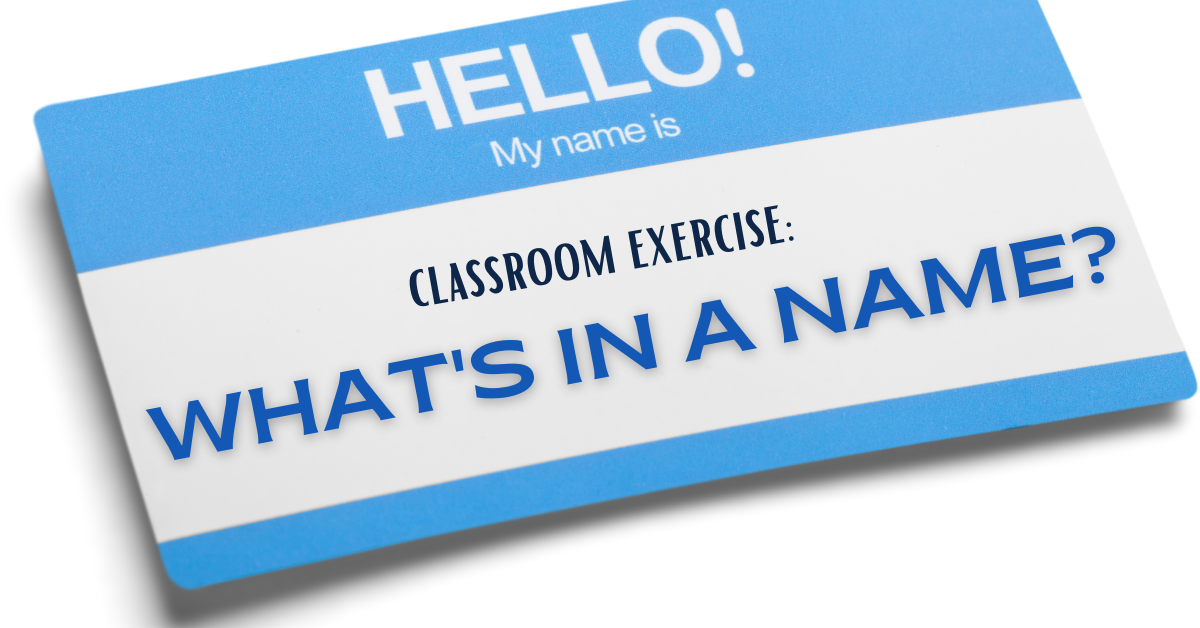Horror Movie 101: Failing Can Be Deadly by Steven Stack is a chilling mix of horror and humor - perfect for student performers and the spooky season! 👻

Ordered Chaos: Balancing structure and creative activity in the drama classroom
The number one problem in the classroom is not discipline: it is the lack or procedures and routines. – Harry Wong, The Well Managed Classroom
The Drama Classroom is a unique place. Often there are no defined rows of tables and chairs. A loud boisterous class could be a sign of productivity not unruliness. And what other class includes warm-ups?
There must be a balance between creative activity and structure in the drama classroom. It’s not unusual for students to act out or misbehave (especially students new to drama) because the expectations in drama class are so different than expectations in other classes.
A drama teacher must have a plan in place to maintain control. This is to create an environment so that you and your students are able to spend as much time as possible learning and not managing disruptions. Each teacher will have their own definition of what that means, but elements to consider include routine, behaviour, co-operation via group work, and peer leadership.
How do you set your drama classroom up for success?
Routine
Students like structure. They like knowing what they’re doing. Routine can be established even in the drama class, where you may move from loud group activities, to journal work, to scene study.
How do you start and end each class? The easiest way to establish routine in the drama class is to set a routine for the beginning and end of class. This way, regardless of what activities make up the bulk of the class, there is start and a finish that rarely varies.
There are a variety of activities you can use:
- Shed the outside world: have students take their shoes off, put their electronics on a shelf, and drop their bags. Follow these steps in exactly the same way, in exactly the same place every class. Make it a transition ritual to help establish that drama class is different.
- Circle up and the beginning and end. Students know that when they walk in the room, they sit in a circle. Just before the bell rings, they know to return to the circle.
- Bell work. Students know when they walk in the room they pull out their journals and respond to something written on the board. It could be a reflection, a response to a question, or an opinion. You can also end each class with a reflection. What happened in the class that day?
- Warm-ups. Every drama teacher knows to make warm-ups a part of the class routine. It’s another great way to establish the difference between drama class and other classes. Also, drama warm-ups introduce students to the techniques and tools needed to perform.
Routines take time to establish. You can’t chastise students for not knowing your specific routines the first day of class.
The way to set a routine is practice. Instead of telling students the routine, take them through it physically. Practice getting into a circle on an aural cue (e.g. the word “circle,” a specific piece of music, or a clapping pattern). Model the routine for them – show them how you want their shoes, phones and bags placed. Model how you want warm-ups taught and have students practice. It may seem like a lot of work but a semester is a long time. A few weeks at the beginning of the year will save tons of time and energy later.
Peer Leadership
One of the best ways to manage the potential chaos of the drama classroom is to establish peer leadership. Teach students to lead themselves and to lead one another. This way it’s not just your voice asking for quiet, getting students into groups, and repeating instructions. Students respond more quickly and consistently to their peers than they do to adults. A leadership role empowers students to further their communication skills, to make decisions, and to learn in practice what it means to take responsibility.
How do you get students to take on a leadership role?
- Create a sign-up roster for student-led warm-ups. Each student is responsible for teaching a warm-up to the class.
- After you give instructions for an activity, choose students to re-teach the instructions.
- Identify the leaders in the class and speak with them. Ask them to help you keep others on track during exercises.
- Get students in the habit of asking one another for clarification of activity instructions. This way students learn that you will not repeat things just because they weren’t listening and they must turn to their peers for help.
- Give students tasks: taking attendance, handing out / returning homework, and giving instructions.
Group Work
If you find yourself with an overly large class, focus on project-based small group activities. These activities give students the opportunity to practice cooperation skills.
While some groups work well together, others do not. Sometimes there are students who let others take control and do nothing. It’s not a given, even by the time they reach high school, that students know how to work together effectively and efficiently.
How do you get your students to work together?
- The teacher assigns the groups. And this goes beyond random groupings – spend time getting to know your students before you introduce group work. Then you can put the groups together like a recipe. Which students will fit together best?
- One reason students won’t work together is because they simply don’t know each other well. It’s always easier to work with your friends. Use exercises that allow students to learn about each other.
- Play an icebreaker game: Have students walk around the room until a designated signal. The first person a student makes eye contact with is their partner. The teacher calls out a category such as favourite movie, food you hate, best song, and the students share their info. Circle up after a few rounds. Students have to recall what others said. Give points for correct answers.
- Set the parameters for what it means to work in a group before you give them a specific project. What is the expected outcome of group work? What’s expected from each individual within the group? What sound volume is appropriate for group work? Model your expectations; show students what an ineffective group member looks like.
- Have students practice working in groups. Give students an easy task and a desired outcome. For example: This exercise allows students to practice the act of coming up with an unanimous decision within a group.
- Establish a designated non-verbal “quiet time” signal so you’re not yelling over the noise (e.g. a clap pattern that everyone repeats or a piece of music).
Behaviour
There are a many websites that offer advice for addressing difficult behaviour.
- The articles on Smart Classroom Management offers several great tips and strategies. I really like how this educator addresses positive and negative behaviour in a way that doesn’t disrupt the flow of the class.
- This website has 97 Free Classroom Management Worksheets. I wouldn’t say it’s well-organized, but you’ll certainly find some inspiration for say a poster or a classroom rules handout.
How do you manage expected behaviour in specific drama activities?
Learning to be an audience member
Students will not instinctually know how to behave as an audience member. If performance is a constant part of class, students will need to learn the appropriate skills.
- Create a ritual that announces the start of every performance. This could be lights actually going to black, a clap pattern, or a verbal cue such as “blackout” or “actors ready.” This routine gives students a clear indication as to when they need to go into “audience mode.”
- Expect total focus on the performance space. This covers all the bases. If a student is focused on the stage they are not talking, texting, or staring into space.
- Expect students to respond (e.g. it in a peer feedback form, a reflection or in a small group discussion) to each performance Proper audience behaviour is not just “looking” at the stage; it also requires you to engage with the performance.
- Practice being an audience. Model good and bad audience behaviour for students. Prompt a discussion about why proper audience behaviour is important.
A final word on structure.
Establishing a rigid classroom structure (i.e. creating routines, modelling behaviour, and practising how to work in groups) may seem like a creativity killer. In fact, the opposite is achieved. Classroom management in the drama classroom establishes a safe place for students to explore their creativity, learn unique skills, and get out of their comfort zone.
The Drama Teacher Academy offers a full professional development course on classroom management. Click here to find out more about Matt Webster’s Organized Chaos: Discipline in the Theatre Classroom, and watch the course promo video below!


